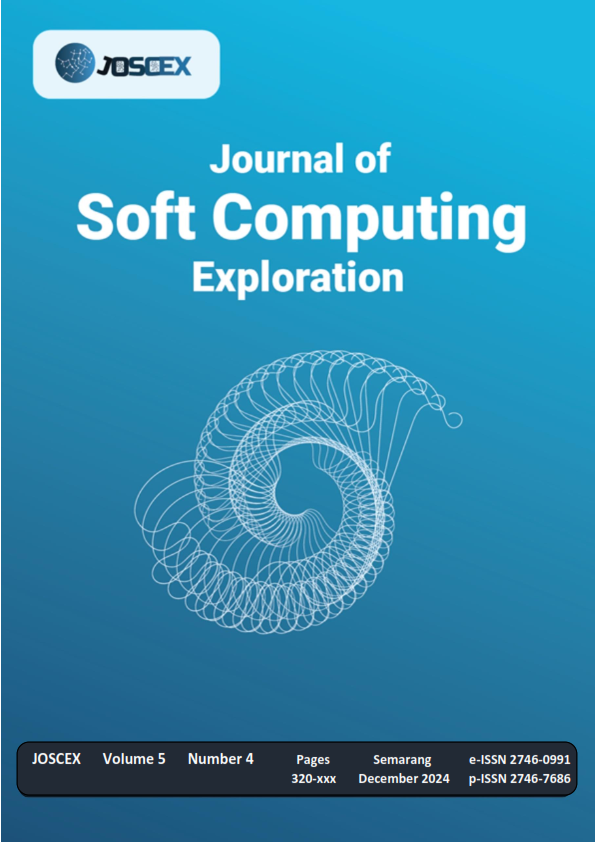Design of smart baby incubator for low-birth-weight newborns
Main Article Content
Abstract
The newborns mortality rate in Indonesia is still quite high, indicated by the neonatal mortality rate (AKN) of 15 per 1000 Live Births, where the target is only below 10 per 1000 Live Births. This mortality rate can be caused by Low-Birth-Weight (BBLR) cases that leads to death. One form of handling for these cases is using a Baby Incubator for intensive cares, which requires monitoring manually and requires the presence of a nurse around the baby incubator so that the condition of the baby incubator room remains stable. Several studies have been conducted and produced a smart incubator system to address these shortcomings. However, most of the smart incubators only focused on monitoring the condition of the incubator room without observing the condition of the baby inside. Based on this, a study was conducted that focused to producing a smart baby incubator that is capable of real-time monitoring of of room conditions (temperature, humidity, and oxygen levels) and baby conditions (temperature, heart rate, oxygen saturation, baby crying, and baby visuals) by applying the Internet of Things (IoT). The results of this study have the largest number of parameters monitored compared to previous studies.
Downloads
Article Details

This work is licensed under a Creative Commons Attribution-ShareAlike 4.0 International License.
References
BPS, Proyeksi Penduduk Indonesia 2015-2045 Hasil SUPAS 2015. 2018.
DATAin, BONUS DEMOGRAFI DAN VISI INDONESIA EMAS 2045. 2023.
A. Wardhana, B. Kharisma, and S. A. Noven, “DINAMIKA PENDUDUK DAN PERTUMBUHAN EKONOMI DI INDONESIA,” Bul. Stud. Ekon., p. 22, Feb. 2020, doi: 10.24843/BSE.2020.v25.i01.p02.
Kemenkes, PEDOMAN PELAYANAN ANTENATAL TERPADU. 2020.
D. Nasution, D. S. Nurdiati, and E. Huriyati, “Berat badan lahir rendah (BBLR) dengan kejadian stunting pada anak usia 6-24 bulan,” J. Gizi Klin. Indones., vol. 11, no. 1, p. 31, Jul. 2014, doi: 10.22146/ijcn.18881.
I. Hartiningrum and N. Fitriyah, “Bayi Berat Lahir Rendah (BBLR) di Provinsi Jawa Timur Tahun 2012-2016,” J. Biometrika dan Kependud., vol. 7, no. 2, p. 97, Feb. 2019, doi: 10.20473/jbk.v7i2.2018.97-104.
J. F. Lestari, R. Etika, and P. Lestari, “MATERNAL RISK FACTORS OF LOW BIRTH WEIGHT (LBW): SYSTEMATIC REVIEW,” Indones. Midwifery Heal. Sci. J., vol. 4, no. 1, pp. 73–81, Sep. 2021, doi: 10.20473/imhsj.v4i1.2020.73-81.
I. Budiarti, R. Rohaya, and T. D. S. Silaban, “Faktor-Faktor yang Berhubungan dengan Kejadian Bayi Berat Lahir Rendah (BBLR) di Rumah Sakit Muhammadiyah Palembang Tahun 2020,” J. Ilm. Univ. Batanghari Jambi, vol. 22, no. 1, p. 195, Feb. 2022, doi: 10.33087/jiubj.v22i1.1927.
A. Novitasari, M. S. Hutami, and T. Y. R. Pristya, “PENCEGAHAN DAN PENGENDALIAN BBLR DI INDONESIA: SYSTEMATIC REVIEW,” Indones. J. Heal. Dev., vol. 2, no. 3, pp. 175–182, Oct. 2020, doi: https://doi.org/10.52021/ijhd.v2i3.39.
E. S. Astuti, F. K. Solikhah, and N. Ernawati, “Peningkatan Pengasuhan Bayi Berat Lahir Rendah (Bblr) oleh Tenaga Kesehatan dan Kader,” J. Kreat. Pengabdi. Kpd. Masy., vol. 5, no. 12, pp. 4311–4322, Dec. 2022, doi: 10.33024/jkpm.v5i12.7950.
S. Sendra, P. Romero-Diaz, J. Navarro-Ortiz, and J. Lloret, “Smart Infant Incubator Based on LoRa Networks,” in 2018 IEEE/ACS 15th International Conference on Computer Systems and Applications (AICCSA), IEEE, Oct. 2018, pp. 1–6. doi: 10.1109/AICCSA.2018.8612863.
S. Purwiyanti, S. R. Sulistiyanti, F. A. Setyawan, B. M. Wibisono, K. sasmita Atmaja, and H. Fitriawan, “Multisensors System for Real Time Detection of Length, Weight, and Heartbeat of Premature Baby in The Incubator,” in 2018 International Conference on Electrical Engineering and Computer Science (ICECOS), IEEE, Oct. 2018, pp. 85–88. doi: 10.1109/ICECOS.2018.8605208.
M. Zhao, H. Duan, W. Huang, and K. Sun, “Central Real-time Monitoring System for Premature Baby Incubator,” in 2020 IEEE 3rd International Conference of Safe Production and Informatization (IICSPI), IEEE, Nov. 2020, pp. 385–390. doi: 10.1109/IICSPI51290.2020.9332206.
D. Rahsidin, Ritzkal, and A. H. Hendrawan, “Sistem Monitoring Suhu dan Kelembaban Inkubator Bayi dengan Teknologi Whatsapp,” J. Univ. Muhammadiyah Jakarta, 2019.
Q. Hidayati, N. Yanti, and N. Jamal, “Sistem Monitoring Inkubator Bayi,” J. Tek. Elektro dan Komput. TRIAC, vol. 6, no. 2, Dec. 2019, doi: 10.21107/triac.v6i2.5989.
M. Koli, P. Ladge, B. Prasad, R. Boria, and N. J. Balur, “Intelligent Baby Incubator,” in 2018 Second International Conference on Electronics, Communication and Aerospace Technology (ICECA), IEEE, Mar. 2018, pp. 1036–1042. doi: 10.1109/ICECA.2018.8474763.
F. Ahmed, A. Sufyan, S. Hussain, A. Rehman, S. Amin, and Y. Salam, “Smart Baby Incubator,” in 2021 International Conference on Computing, Electronic and Electrical Engineering (ICE Cube), IEEE, Oct. 2021, pp. 1–5. doi: 10.1109/ICECube53880.2021.9628245.
M. Ali, M. Abdelwahab, S. Awadekreim, and S. Abdalla, “Development of a Monitoring and Control System of Infant Incubator,” in 2018 International Conference on Computer, Control, Electrical, and Electronics Engineering (ICCCEEE), IEEE, Aug. 2018, pp. 1–4. doi: 10.1109/ICCCEEE.2018.8515785.
S. K. Maulani, S. Syaifudin, A. M. Maghfiroh, and L. F. Wakidi, “Design of Incu Analyzer for IoT-Based Baby Incubator Calibration,” J. Teknokes, vol. 17, no. 1, Mar. 2024, doi: 10.35882/teknokes.v17i1.610.
A. S. Utomo, A. B. Satrya, and Y. Tapparan, “MONITORING BABY INCUBATOR SENTRAL DENGAN KOMUNIKASI WIRELESS,” Simetris J. Tek. Mesin, Elektro dan Ilmu Komput., vol. 9, no. 1, pp. 225–230, Apr. 2018, doi: 10.24176/simet.v9i1.2081.

